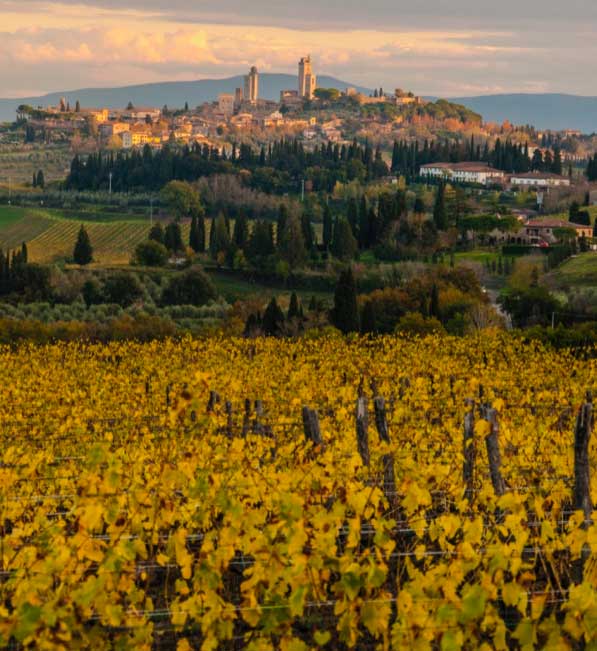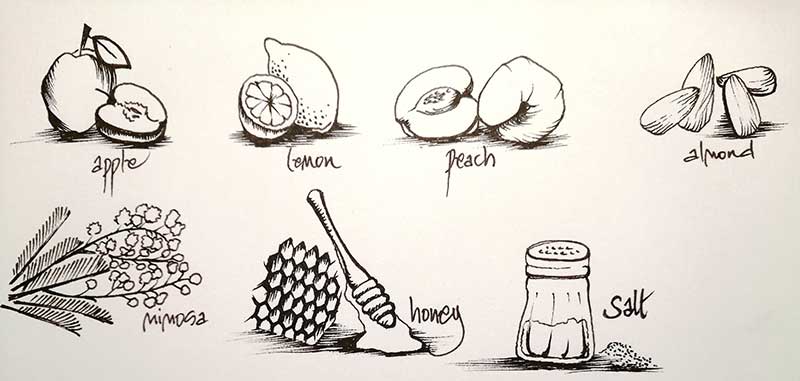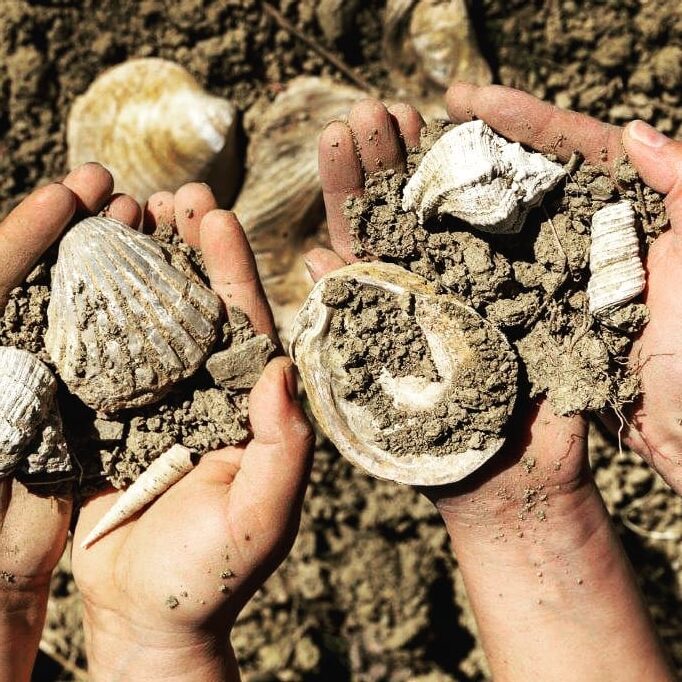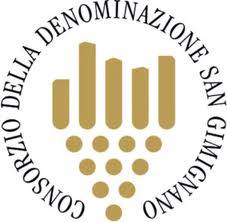Vernaccia di San Gimignano
A white wine worthy of note!
Tuscany is mostly known as a land of reds, since red grape varietals tend to flourish under the Tuscan summer sun and dry heat, where it frequently ceases to rain for weeks. The climate is ideal for the cultivation of red grape varietals, and Tuscany has given rise to a series of renowned red wines.
There is, however, a “pocket” of white wine production among the Chianti hills that surround the UNESCO protected “Town of Towers”, San Gimignano, that has existed for over 700 years. This is where an ancient, native grape varietal that became a medieval bestseller was almost lost and is now flourishing anew: the Vernaccia grape that gives rise to a white wine of the same name, Vernaccia di San Gimignano DOCG. Ever heard of it? With just 720 hectares (under 1800 acres) of vineyards set aside for its production and only 70 producers bottling and releasing their own brand and label, there really isn’t enough to stock shelves around the entire world. However, this dry white wine was cited by Dante in the early 1300s and boasts the longest, most interesting history of success and decline, as well as a rebirth that allowed it to become the first Italian wine to obtain DOC status back in 1966. Unlike so many of the aromatic white wines that are currently so trendy, Vernaccia has body and persistence. It’s much more than just a pleasant, aromatic aperitif, since Vernaccia is frequently best enjoyed with a hearty meal.
Vernaccia’s long history
A Medieval bestseller
No Italian wine can boast the documented history that dates back centuries like Vernaccia di San Gimignano. There are tax documents in the town of San Gimignano that mention this most precious white wine of regal color as far back as 1276, and it was at this time that the wine appeared on the tables of kings, cardinals and wealthy merchants throughout Europe. In the areas around San Gimignano, which already produced widely acclaimed saffron, it soon became a leading product. The production of Vernaccia spread to fulfill the demands of a thirsty and ever-growing market, since it became one of the most popular and sought-after wines for centuries, initially throughout Tuscany and into the Ligurian coastal areas, then to almost all the winemaking areas of the peninsula. Versions of the wine appeared as far as Calabria in the south and Lombardy up north, but the most popular and sought-after wine remained the Vernaccia from San Gimignano.
Records attest to the fact that demands from the “powerful” were far from occasional; Vernaccia wine filled the goblets at the wedding uniting the renowned Rucellai family to the governing Medici in 1465. The lord of Milan, Ludovico il Moro, expected 200 flasks from the municipality of San Gimignano for a wedding that united his Visconti family to Isabella, daughter of the king of Naples in 1487. Two official testers were appointed by the municipality of San Gimignano by 1477, so that they could procure the best Vernaccia when demands were made and the stakes were so high, and high they frequently were. The Vernaccia wine had attained outstanding success among poets and literates. Mentioned not just by the Italians Dante and Boccaccio, but the French Eustache Deschamps and the English Geoffrey Chaucer, Vernaccia continued to be favored at the courts around Europe and even appears in Giorgio Vasari’s fresco inside Florence’s Palazzo Vecchio.
Vernaccia’s decline
A slow but steady and progressive decline in the production of Vernaccia characterized the 18th and 19th centuries, coinciding with a radical change in taste thanks to the arrival in Europe of exotic beverages from much further afield: mostly tea, coffee and chocolate. Liqueurs that were previously unknown or used only as medicine also became fashionable, relegating white wines to the margins of society and markets. By the end of the 19th century, around San Gimignano the Vernaccia grape variety was found only mixed in vineyards with other varietals, used mostly “to make common wine” and frequently added to red wine.
Vernaccia’s Rebirth
The rebirth of the Vernaccia varietal began in the 1930s, when Carlo Fregola found the old grape varietal scattered throughout the vineyards of almost every area in the municipality of San Gimignano, and pleaded with local growers through a series of itinerant lectures on agriculture to understand the importance of regaining the old consideration of Vernaccia, a product of the highest prestige. The Second World War quashed any hopes of renewal, but the process had been triggered and took off again strongly in the early 1960s, which marked the wine’s rebirth. Having recovered the old grape varietal from the confusion of the mixed vineyards, Vernaccia was replanted in the vineyards according to the dictates of specialized viticulture.
In 1966, it was the first Italian wine to attain DOC status (Denomination of Controlled Origin), with the Consorzio being founded just 6 years later.
Production regulations
What rules are behind the production of every bottle of Vernaccia di San Gimignano wine?
According to the Production Regulations, the only designated area for the production of Vernaccia di San Gimignano wine is the municipal territory of San Gimignano. The wine must be made with at least 85% Vernaccia grapes, allowing for a maximum presence of 15% of other, non-aromatic white grape varietals, suitable for cultivation within the Tuscany Region. Some Vernaccia wines are made from only Vernaccia grapes, whereas others are blends with more than four fifths always being Vernaccia grapes. The other grapes that may be added are always a minority, and some varietals are not allowed to be used at all. Traminer, Muller Thurgau and Moscato Bianco are not permitted; their exclusion is due to their extreme aromatic characteristics, which would dramatically change the nature of the Vernaccia. Sauvignon Blanc and Riesling may be included, but only for a maximum of 10%, whether alone or together. The yield per hectare must not exceed 9000kg. The grapes must be vinified and the wine must be aged within the production area.

The wine’s characteristics
What properties characterize the Vernaccia wine and stimulate the sense organs?

According to the Production Regulations, when the Vernaccia di San Gimignano is released to market, it must adhere to the following characteristics:
– pale straw yellow with golden highlights that become more evident with age
– aromas that are fine and delicate, with fruity and floral scents (when young)
– the characteristic mineral scent of flint (as it ages)
– a dry, harmonious and savory wine
– min. alcohol: 11.5% vol. and 12.5% vol. for Vernaccia Riserva
– residual sugar: max. 4 gr / liter
– total acidity: min. 4.5 gr / liter
Vernaccia DOCG Riserva wine
The best grapes selected are used to make Vernaccia di San Gimignano DOCG Riserva, for which a minimum aging period of 11 months are required in the cellar, followed by at least 3 months of refinement in the bottle. While pleasant as a young wine, Vernaccia often surprises with its capacity for ageing, as it develops notes in the nose and mouth that are complex and mineral. It is not unusual to find old vintages bottle of Vernaccia di San Gimignano Riserva wine at prices that are normally reserved for premium reds, with results that are comparable in complexity and length. It really is no coincidence that Vernaccia is one of the very few Tuscan white wines that is also made as a Riserva wine for aging in the bottle.
Food pairing & Serving temperature
Vernaccia di San Gimignano pairs well with a wide variety of dishes. It is naturally fitting with Mediterranean cuisine, in which extra virgin olive oil abounds. Excellent with rice and pasta dishes, fish and seafood made with any cooking technique, whether baked, fried or grilled. Vernaccia pairs well with vegetables in all seasons and dishes in which they dominate and is magnificently exquisite with white meats, including rabbit, fresh and medium-matured cheeses. Vernaccia is also perfectly fitting to fried foods and eggs, including many popular Asian dishes. The serving temperature should be between 8° and 11°C. (47-52°F) for a standard bottle, and between 12° and 14°C. (53-57°F) for Riservas.
The Vernaccia Production Area
Size and numbers
The territory of the production of the appellations of protected origin falls entirely within the Municipality of San Gimignano, in the northwest part of the province of Siena, in the heart of Tuscany. The surface area of the Municipality of San Gimignano is of about 12,500 hectares, half of which are destined to farm productions (vineyards, olive groves, cereal crops). Vineyards account for 1,900 hectares, of which 720 hectares are destined to the production of Vernaccia di San Gimignano DOCG and 450 hectares destined to the production of San Gimignano DOC. The remaining 730 hectares are for the production of IGT white and red wines, Chianti and Chianti Colli Senesi. There are 170 producers in the San Gimignano area, only 70 of whom bottle and sell their wine under their own label and brand.
Climate and soils
The production area is characterized by a Mediterranean climate with rather dry summers, not particularly harsh winters and rainfall concentrated in April/May and November, with temperatures varying from -5°C to +37°C. (23°-99°F). The area benefits from good ventilation and is only rarely cloaked in fog, being on hills at altitudes between 200 and 400m (650-1300 feet) above sea level. The soils are mostly of Pliocene origin formed on marine deposits and consisting of yellow sand (tuff) and yellow clay which, in turn, are often layered over more compact clays deeper down. The soils destined to the wine production are strongly characterized by the presence of sand and have almost no heavy stone at all, being loose and susceptible to penetration by the roots of the vines, usually poor in organic substance and well drained thanks to the sand.
A myriad of variables
The San Gimignano hills present variable exposures, altitudes, soil compositions and availability of water. The multiple and sometimes unique combinations of these single factors have, even in such a small area, a significant effect on the characteristics of the Vernaccia di San Gimignano wines made there, accentuating the fruity or mineral characteristics or the sapid savory quality of flavor, depending on these factors. It is not unusual for producers to find marine fossils in their vineyards.

Consorzio della Vernaccia
The Consorzio or Consortium of the Vernaccia was set up in 1972 to ensure the correct management of the Vernaccia di San Gimignano appellation, this being the first Italian wine to achieve DOC status. The Consorzio pursued the fundamental aims to enhance the value of the appellation, to defend the Vernaccia DOC and to carry out research and development relating to product quality, working hard to give a new boost to production, which grew progressively in terms of quantity and quality. The Consorzio of the Vernaccia later became the Consorzio della Denominazione San Gimignano to include other wines produced within the region, namely San Gimignano DOC wines.
The Vernaccia di San Gimignano DOC attained DOCG (Denomination of Controlled and Guaranteed Origin) recognition in 1993, the highest acknowledgement of the Italian legislation concerning wines. The years since then have been marked by the effort to continue to increase the quality of the wine and to ensure the healthy nature of the product, with the Consortium taking on a fundamental role in the promotion of the brand through marketing activities that increase the knowledge and dissemination of Vernaccia di San Gimignano and San Gimignano DOC in Italy and abroad. More information about the area’s wines can be found on the Consortium’s website together with their promotional activities.

